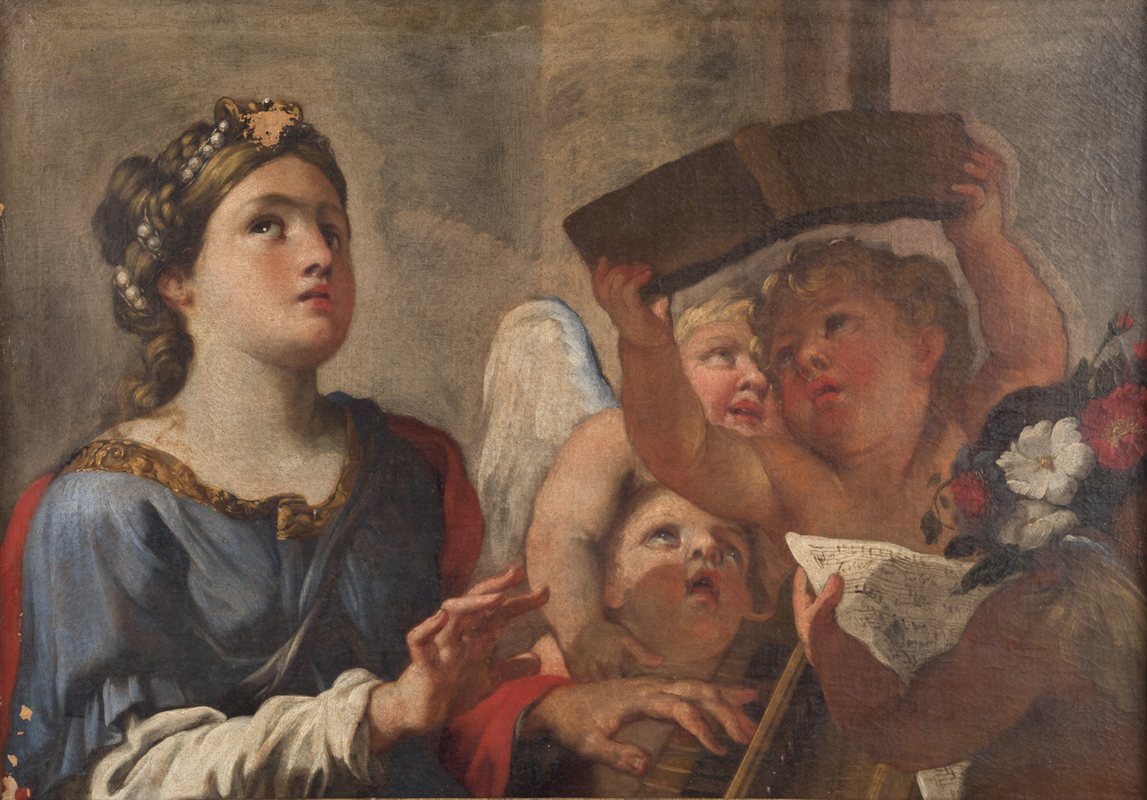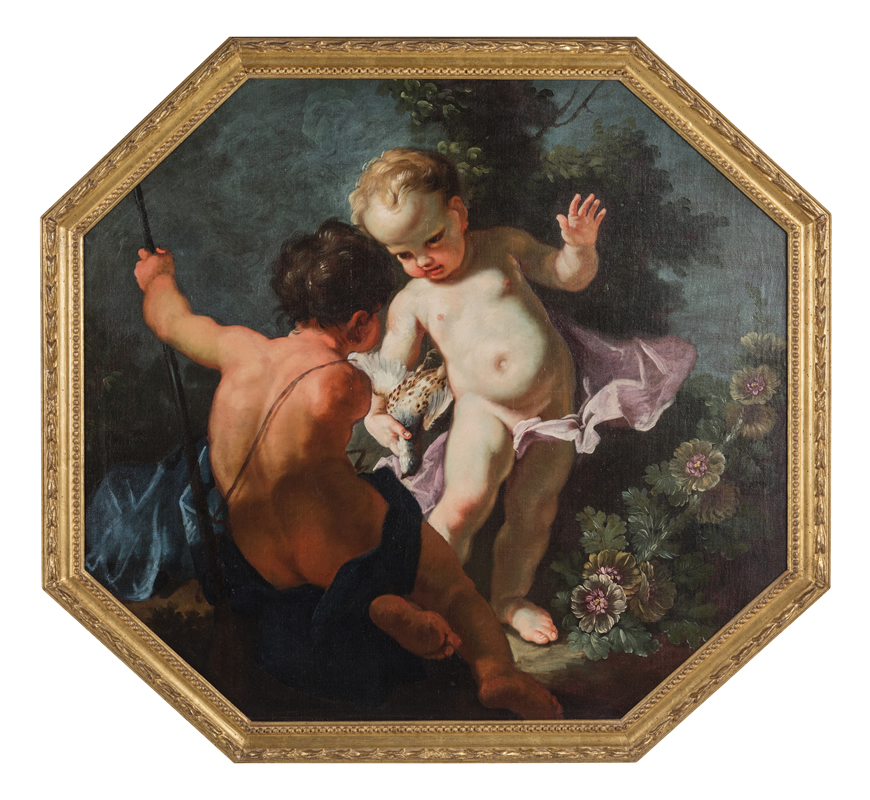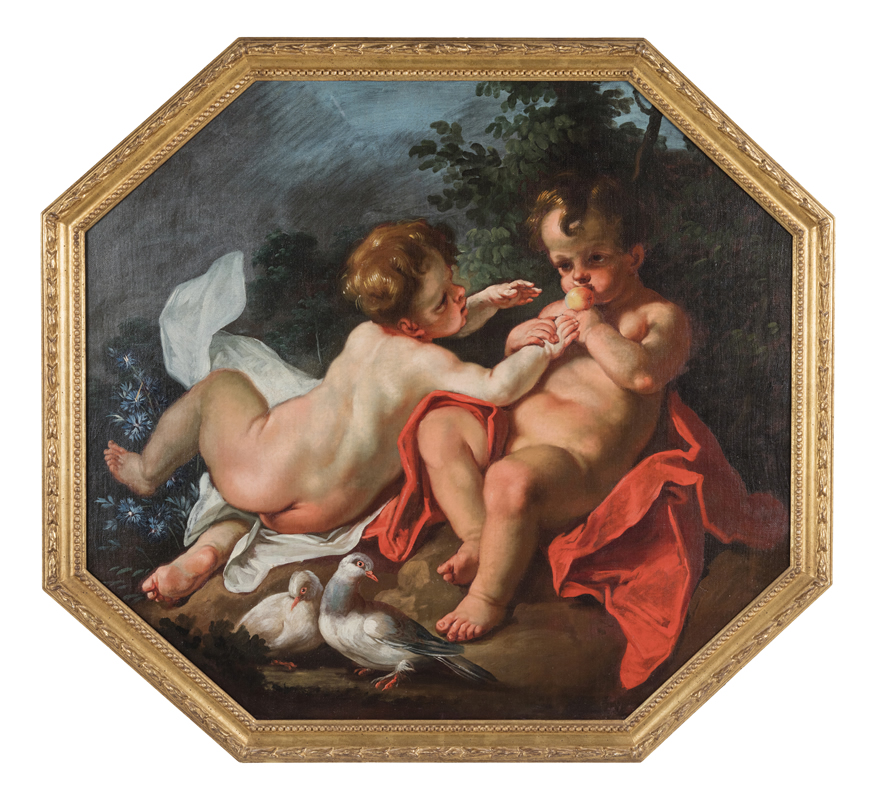In the history of the Seventeenth century, the Baroque fully represented the complexity of a century that witnessed the blossoming of artistic and scientific maturity: Shakespeare and Galileo, Monteverdi and Bernini, and in painting, Pietro da Cortona and Luca Giordano. Artists of the greatest talent and the most animated of imaginations, who, throughout their bright and splendid careers, influenced generation upon generation of admiring colleagues who were soon to imitate their magnificent skills and styles. Such skills were the synthesis of an apprenticeship imbued with an insistence and desire to combine the teachings of naturalistic truth revealed by the likes of Caravaggio and the Apollo-like and Classical equilibrium that were typical of Annibale Carracci and Guido Reni.
One particular example of this stimulating contamination of influences may be found in the Saint Cecilia by Luigi Garzi (1638-1721) who trained and worked in the Eternal City. After an apprenticeship at “Salomon Boccali pittor di paesi (painter of villages)”, he attended the workshop of Andrea Sacchi and directed his studies towards the Classicism of Raphael, Domenichino and Nicholas Poussin, without of course forgetting the classical Academy in Bologna, and in particular the work of Giovanni Lanfranco. Luigi Garzi was fascinated by the work of Pietro da Cortona and Carlo Maratta and finally achieved his very own style of refined and original elegance that is well depicted in this painting from the eighth decade of that century on account of its peculiarly heightened brushstrokes and duller tones in comparison with those he would carry out over the following years.
Baroque art throughout its overwhelming and complex evolutionary progress stepped over the turn of the century and occupied – in its most extreme form – the early part of the Eighteenth century with artists of exceptional talent such as Vittorio Amadeus Rapous, from Turin. He was a pupil of Claudio Francesco Beaumont (Turin, 1694 – 1766) and was influenced by French painting from the very same period as well as painting highly refined floral compositions. Around halfway through the century he marked his debut by painting the six overdoors with “Scherzi di putti” (Cherubs Playing) for the bedroom of the Duke of Chiablese at Stupinigi, revealing his exquisitely Rococo temperament. His clients were the kings of Savoy and for Victor Emanuel III of Sardinia for whom in 1788 he made the over-doors for the palace at Stupinigi as well as the decorations that adorn the gala carriages. The two jovial “Allegorie di putti” (Allegory of Cherubs), refined and delicate and superbly reflecting the grandeur of Francesco De Mura and Corrado Giaquinto, sent to the Savoy Court by Filippo Juvarra.
Lastly, “La morte appare a un banchetto” (Death Appearing at a Banquet) by Domenico Carpinoni, dated to the third or fourth decade of the Seventeenth century is a complex painting in terms of attribution and iconological interpretation but at first impresses on account of its scathingly grotesque strength which, taking its cue from Caravaggio’s great works, adds an ironically gloomy connotation to the definitive subject of memento mori.
2193 Views |
Like





